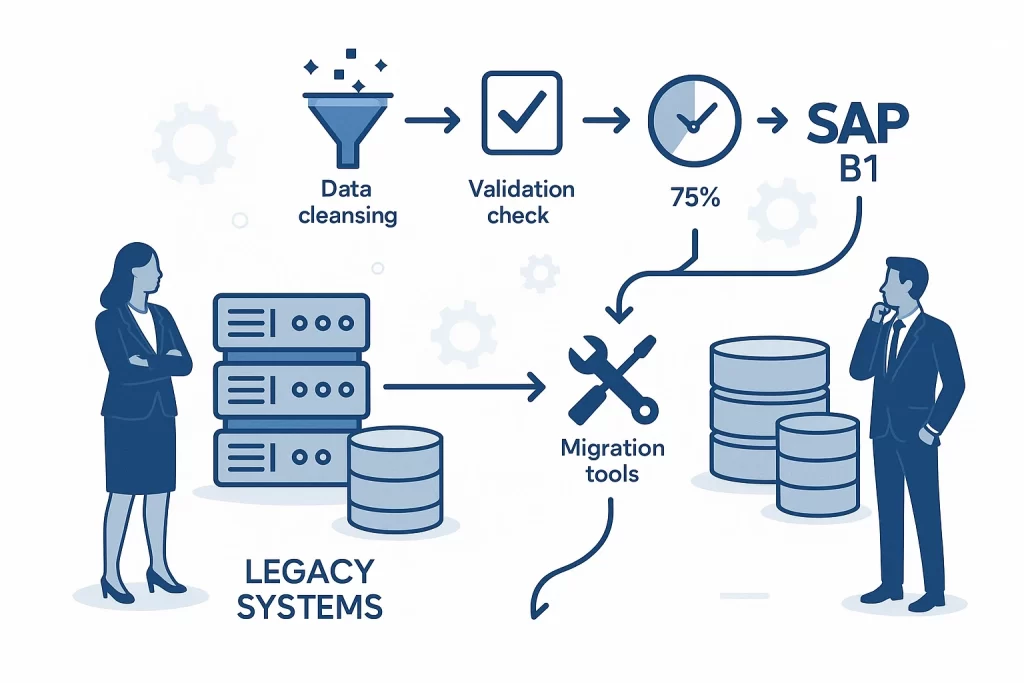Any organization can undergo a major transformation by moving to SAP Business One, which promises better decision-making capabilities, increased visibility, and streamlined operations. But moving from legacy systems to this ERP solution requires careful preparation, precise execution, and adherence to proven best practices. A successful migration means more than just data transfer—it involves change management, testing, and strategic planning to ensure minimal disruption and maximum value.
Strategic Evaluation and Planning
The foundation of a smooth migration lies in a thorough evaluation and clear strategy. Analyze current data structures, processes, and systems to identify dependencies and gaps.
Key Actions:
-
Assess data quality, interdependencies, and workflows.
-
Define migration goals aligned with business objectives (efficiency, compliance, reporting improvements).
-
Set realistic timelines with adequate testing and validation phases.
-
Map critical data components and prioritize accordingly.
Cleaning Data and Managing Quality
Data quality is critical—migrating poor data only multiplies problems.
Steps to Take:
-
Audit existing data for duplicates, errors, and outdated records.
-
Define criteria for retaining, archiving, or discarding data.
-
Create data mapping documents to align legacy fields with SAP Business One.
-
Leverage SAP B1’s enhanced features (e.g., improved categorization, customer preferences) when restructuring data.
Making Use of Technologies and Tools for Migration
Using SAP’s built-in migration tools can streamline the process significantly.
Best Practices:
-
Use Data Transfer Workbench (DTW) for both master and transactional data.
-
Leverage Excel templates, validations, and simulation tools before production migration.
-
Apply incremental migration (phased/batch approach) to minimize disruption and simplify troubleshooting.
Strategies for Testing and Validation
Testing builds trust and ensures migration accuracy.
Approach:
-
Perform unit, integration, and end-to-end process testing.
-
Run simulated migrations in a controlled environment.
-
Involve key users to validate functionality and usability.
-
Establish clear acceptance criteria and secure stakeholder sign-off before go-live.
Support for Users and Change Management
Technical success is meaningless without user adoption.
Recommendations:
-
Develop a communication plan to update stakeholders regularly.
-
Provide role-based training with hands-on exercises.
-
Highlight business benefits of SAP B1 for each user group.
-
Build a champion/super-user network to support adoption across departments.
Risk Reduction and Emergency Preparedness
Every migration carries risks—having backups and contingency plans is essential.
Safeguards:
-
Set up robust backup processes before migration begins.
-
Define and test rollback procedures to revert to legacy systems if needed.
-
Establish escalation protocols and decision criteria for activating contingency plans.
In Conclusion
A successful SAP Business One migration requires careful planning, strong data management, smart use of tools, comprehensive testing, and proactive change management. By following these best practices, businesses can reduce risks, ensure smooth transitions, and maximize ERP ROI.
Remember: migration is only the beginning. Ongoing user training, post-migration support, and continuous system optimization are critical to unlocking the full power of SAP Business One and achieving long-term success.


